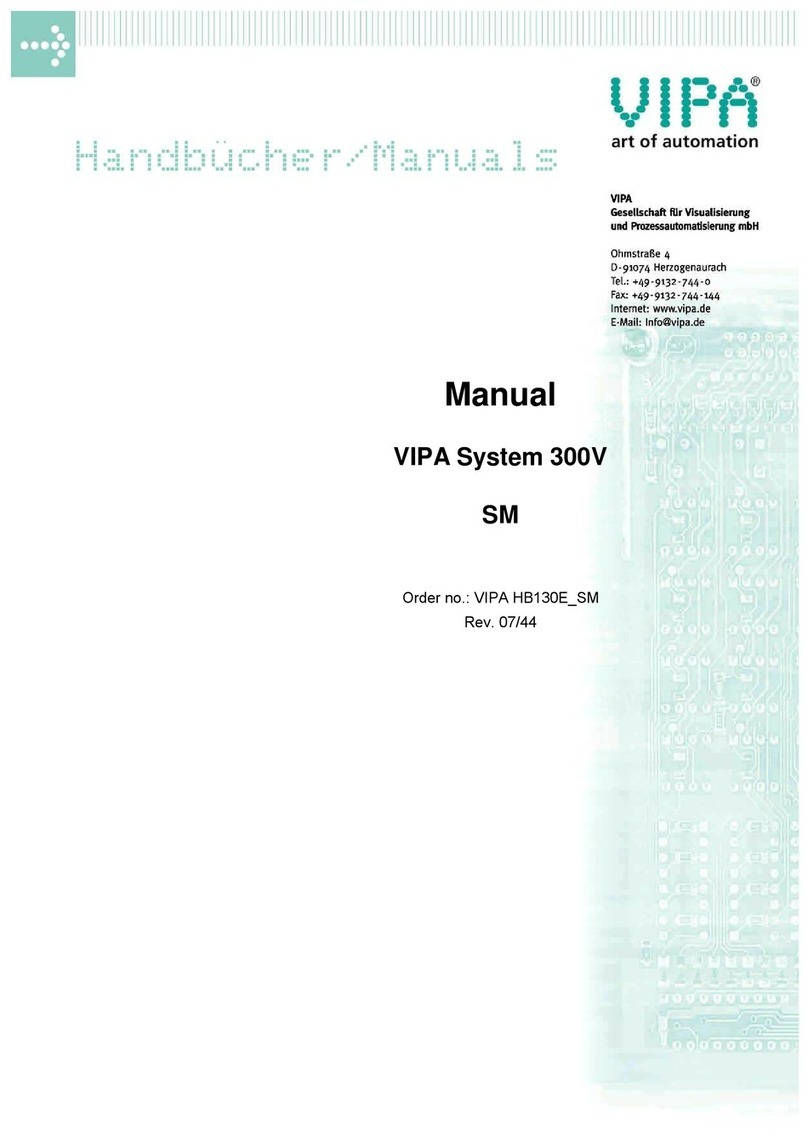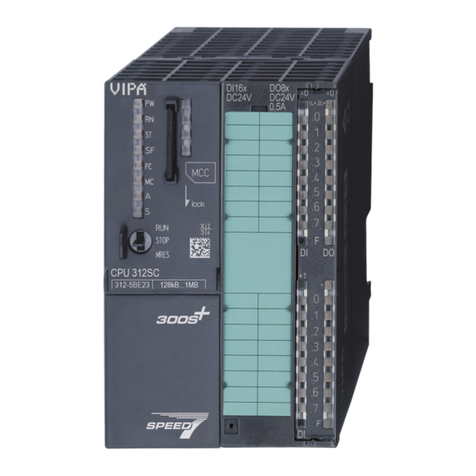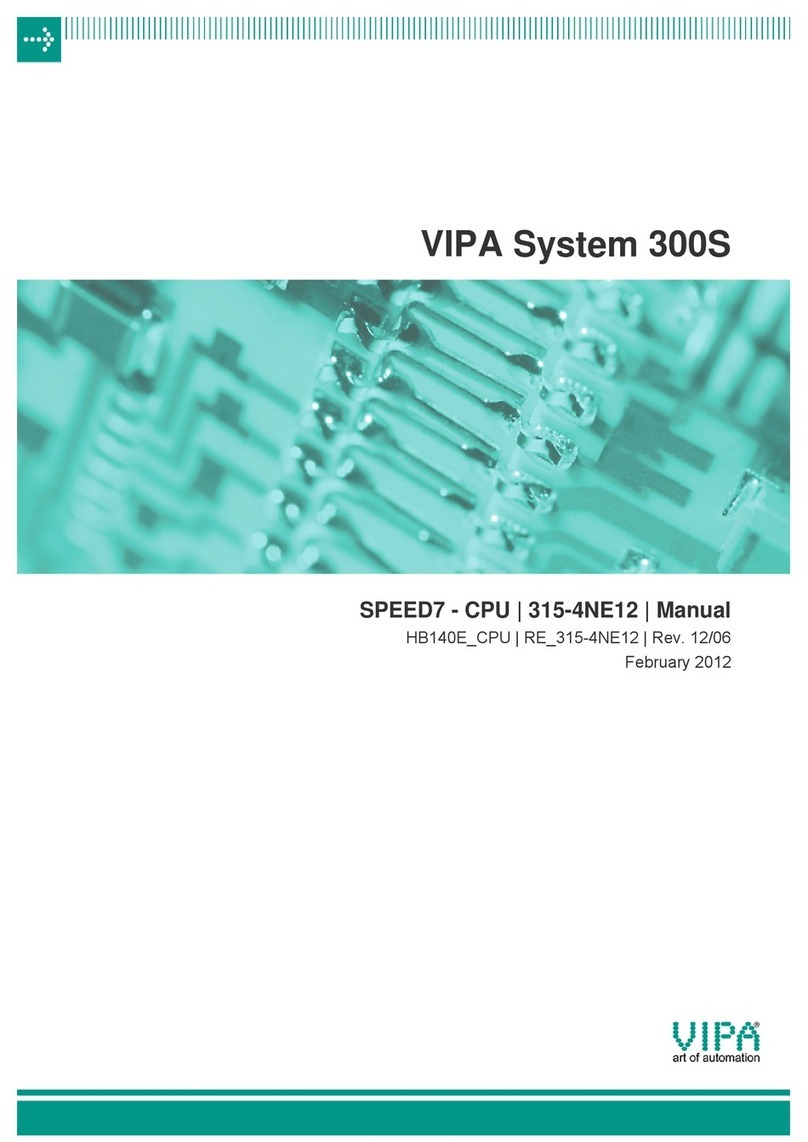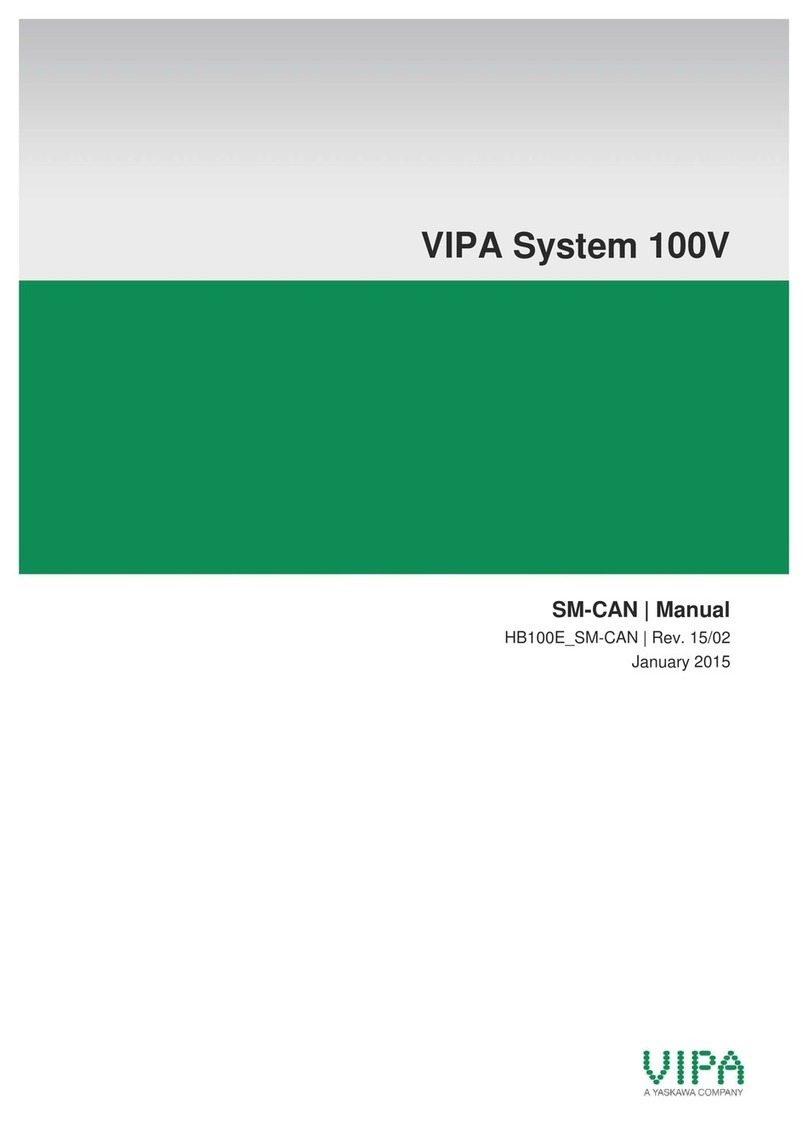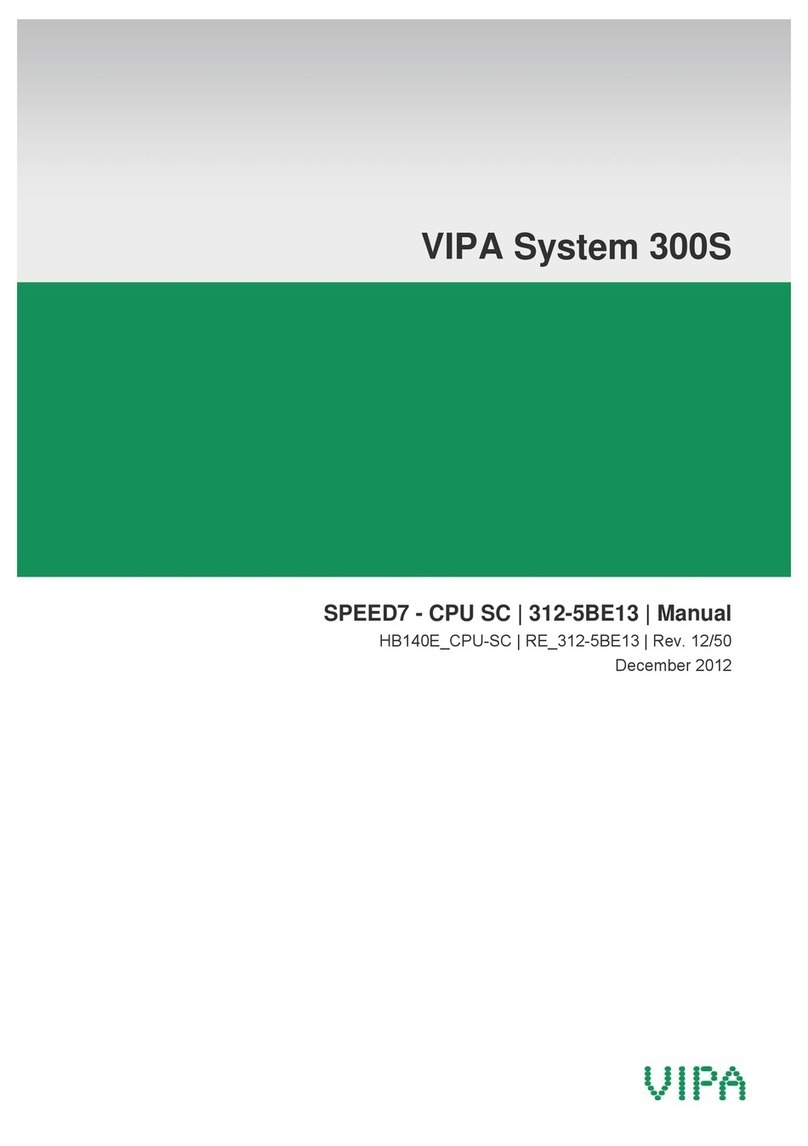
Manual VIPA System 300S SPEED7 Contents
HB140E - CP - RE_342-1DA70 - Rev. 08/27 i
Contents
User considerations.................................................................................1
Safety information....................................................................................2
Chapter 1 Basics..............................................................................1-1
Safety Information for Users................................................................. 1-2
General description of the System 300................................................. 1-3
System 300S........................................................................................ 1-4
Hints for the Project Engineering.......................................................... 1-7
Chapter 2 Assembly and installation guidelines............................2-1
Overview .............................................................................................. 2-2
Installation dimensions ......................................................................... 2-3
Installation Standard-Bus ..................................................................... 2-4
Assembly SPEED-Bus ......................................................................... 2-5
Cabling................................................................................................. 2-8
Installation Guidelines ........................................................................ 2-12
Chapter 3 Hardware description .....................................................3-1
Properties............................................................................................. 3-2
Structure .............................................................................................. 3-3
Technical Data ..................................................................................... 3-6
Chapter 4 Deployment CP 342S-DP................................................4-1
Basics Profibus .................................................................................... 4-2
Addressing at SPEED-Bus................................................................... 4-3
Project engineering .............................................................................. 4-4
Slave operation .................................................................................. 4-10
Profibus installation guidelines ........................................................... 4-13
Appendix................................................................................................A-1
Index ....................................................................................................A-1
